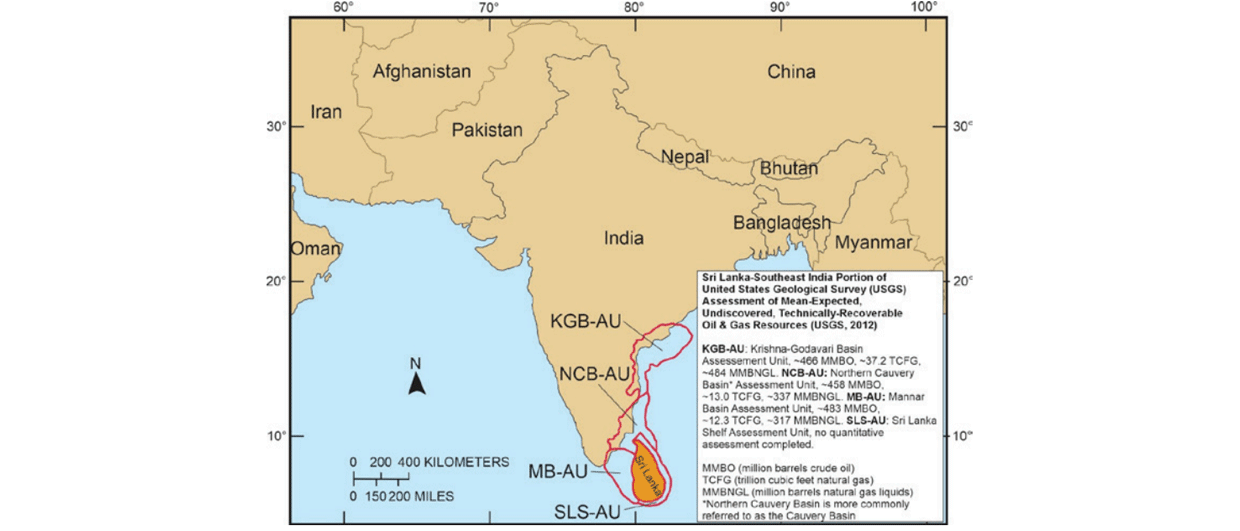The smaller onshore portion of the 44,000 km. Sergipe-Alagoas Basin has been explored for hydrocarbons since 1935, with the first commercial oil discovery in 1957. The basin’s largest field to date, Carmópolis, was discovered in 1963 and was Brazil’s first giant and remains its largest onshore oil field. Oil in place is estimated at 1.3 Bb and the field has now produced more than 400 MMbo.
The Carmópolis Field was a sub-salt discovery in the Muribeca Formation, and is interpreted as deposited in a transitional environment with marine influence, as expressed by the thick evaporite sequences overlying the Aptian reservoirs. The Upper Aptian microbial boundstones were deposited along the Aracaju High, a basement structure located in the margin of the basin. These reservoirs are very similar to those found productive in the Santos, Campos and Espírito Santo basins to the south.
Deepwater Discoveries
Petrobras’s first deepwater discovery in the basin was located about 100 km off the Brazilian coast from the city of Aracaju. Announced in late 2011, well 1-SES-168 (Barra) found high quality gas. In August, 2012, the company announced the completion of the Barra extension, informally referred to as Barra 1 (3-SES-165) well, drilled in 2,433m water depth approximately 10 km south-east of the Barra discovery well. This well confirmed the south-eastern continuity of both the gas accumulation in the upper section of the Mid-Cretaceous Calumbi Formation and oil-saturated reservoirs in the lower section, which is also a post-breakup, Mid-Cretaceous stratigraphic sequence. The lower reservoirs with 38° light oil were found at depths between 5,460 and 5,500m.
In August Petrobras announced another oil discovery (1-SES-168) about 85 km off the coast and 35 km south-west of the Barra accumulation. Known as the Moita Bonita discovery, the well is located in a water depth of 2,775m with a 300m oil column at a depth of 5,070m with 52m of porous sandstones. Finally, in October, Petrobras announced the presence of hydrocarbons in the Farfan well (1-SES-167) drilled at 2,720m water depth 109 km offshore and 10 km south-east of the Barra extension well. A 40m section of porous sandstone containing light hydrocarbons was detected at a depth of 5,582m. Petrobras is proceeding to drill this well up to a depth of 6,000m and will analyze the rocks and fluids before submitting an appraisal plan to the Brazilian National Petroleum, Natural Gas and Biofuels Agency (ANP).
Across the Atlantic
The success in the Sergipe-Alagoas Basin off the Brazilian coast has led to another hot area in the Gabon deepwater sub-salt play. Oil production peaked in Gabon in 1997 at 370,000 bopd and the country has since seen a 34% reduction in production, dropping from the third largest oil producer in sub-Saharan Africa to now sixth at 246,000 bopd. The similarities between the two areas have not been overlooked in the past decades, with several works from geoscientists from Petrobras and the University of Miami comparing the conjugate margins development and hydrocarbon prospectivity.
Harvest Natural Resources made an oil discovery in 2011 which was confirmed by a sidetrack well that encountered oil 1.2 km south-west of the first well. Petrobras has bought into Ophir Energy’s two exploration blocks and other international companies such as Shell, Repsol and Cobalt have shown a great deal of interest there.
Cobalt already has a sub-salt inventory of the Rabi-Kounga Field (940 MMboe) and the 1982 Maruba #2 sub-salt oil discovery. The company has acquired 6,000 km. of 3D seismic and expects to start drilling late this year or early 2013.
Sub-Salt Estimates
The sub-salt play just keeps on getting better, with more discoveries up and down both sides of the Atlantic. The ANP sees the potential as huge. Just along Brazil’s coast, the ANP sub-salt findings predict reserves of 50 Bbo. However, geologist Hernani Chaves, currently a professor at Rio de Janeiro State University and former Petrobras geologist, estimates their reserves to be at least 123 Bbo – quite a jump from the country’s previously established reserves of 14 Bbo. It only follows that all the countries along the West African coast are actively pursuing sub-salt oil and gas opportunities.





